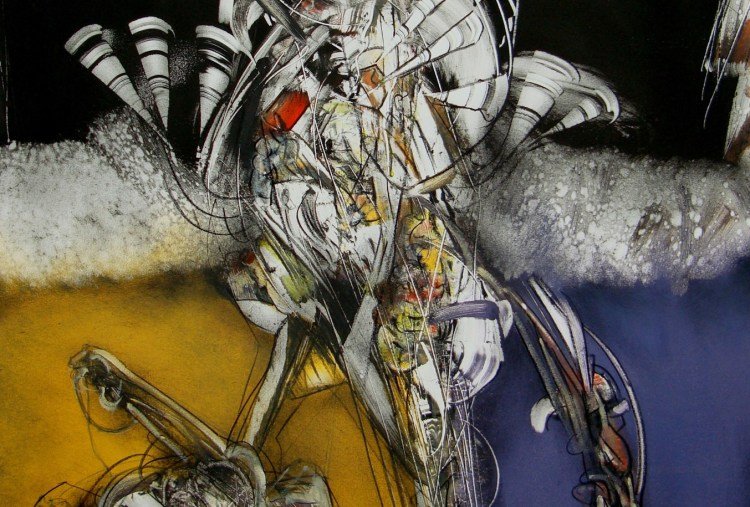Víctor Gómez (Havana, 1941) is an important name in the catalog of Cuban contemporary art. Few know it. Even he doesn’t believe it himself.
Affiliated to the Engraving Workshop of the Union of Writers and Artists of Cuba (UNEAC), founder and coordinator of the group “Nueve versiones del paisaje” (1976), member of the UNEAC, and of the Council of Advisers of the Ministry of Culture, when he left Havana to settle in Florida, in 1980, he had already participated in more than 80 collective exhibits, both inside and outside the country. The ominous gray quinquennium had started being surpassed.
“My arrival in Miami was chaotic. Settling in a city you don’t know always causes uncertainty. I was afraid that this displacement, which is not only geographical if it involves Cubans, could alter the course of my life as an artist. I came from the Havana of the 1970s, where I had a constant artistic activity; I left behind my professional relationships, my friends, my vital and artistic references. That world collapsed when it collided with a different reality, with a different culture and with a different socio-political environment. At the time I was 39, a not very advisable age to try to reinvent one’s life.”
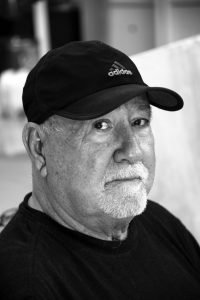
Could you be more specific…
I felt like a fish out of water. Everything was new and confusing. I had to become part of the environment quickly. I worked as a street vendor. It was for a short time. And that was when I met a Cuban-Venezuelan family that bought the first works on paper, which, in the midst of the chaos, I had already done.
That providential family was my first financial support here. They bought my works from 1980 to 1983. For any emigrant, the first three years are very hard, and more so for a visual artist who intends to not abandon his career, and that it, in addition to aesthetic satisfaction, feed him. The tunnel that is mentioned so much. This generous support gave me the chance to settle down, meet new collectors and galleries.
Actually, despite such a drastic change, I can consider myself a lucky man. The abhorrent street vendor job (abhorrent to me, I clarify; it’s as worthy as any other) lasted only three months. From then on, until today when I’m reviewing this with you, I have lived from my art work. I resumed my path and my vocation with new vigor. Although I felt―why not say it?―a certain nostalgia for Cuba’s artistic world, which I had enjoyed so much.
How was Miami’s cultural life then?
More than modest. I would say poor. There was no huge colony of artists who work here today, coming not only from Cuba, but from countless Latin American and European countries, as well as Americans, who today can enjoy a city that has grown, matured and has a huge amount of exhibition spaces, cultural centers and museums. Galleries with a certain reputation could be counted on the fingers of one hand: the Cuban Meeting Point and Forma; and the American ones: Barbara Gillman and Virginia Miller; the latter is still working. Miami has undergone a drastic change in the last 30 years. Its physiognomy has varied, it has become a metropolis with world-class art fairs, such as Art Basel.
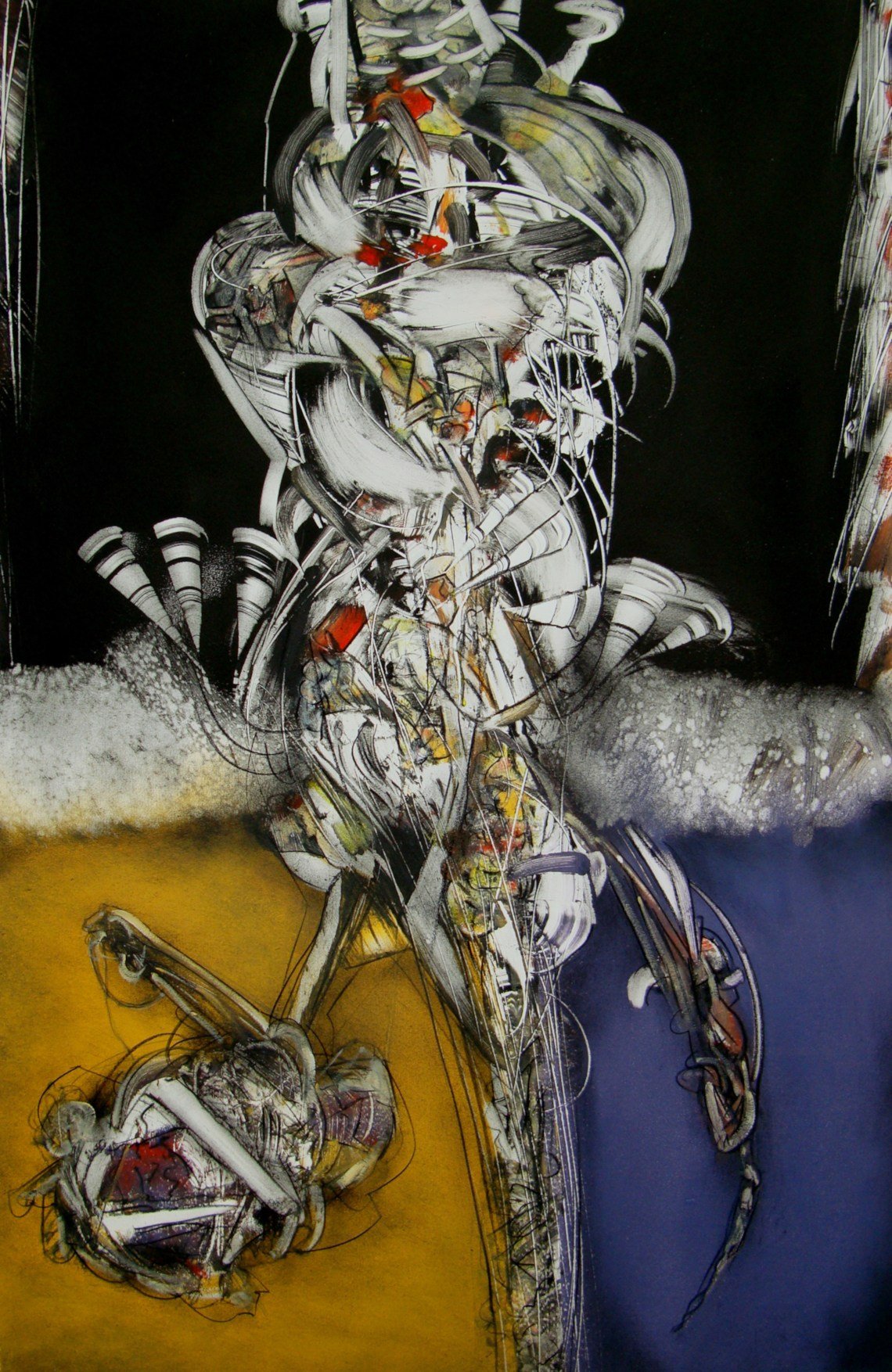
How does your work evolve until you reach the monotypes?
From 1980 to 1986 I only painted. I wasn’t doing that bad. It seems that being “new in town” generated some curiosity, and I achieved an acceptable level of sale by my standards.
In 1986, at a meeting with friends, I met Tomás Rodríguez, an old schoolmate. He had achieved certain economic success. He asked me how he could help me; I told him that my plans included acquiring an etching press, but that I still couldn’t think about that. He told me to stop by his office the next day to pick up the check. I was paying him the loan for almost three years.
This fortuitous event changed my artistic life definitely. I started working on my incipient monotypes on that press.
***
Víctor Gómez (note down those who doubt) is since then the only Cuban artist who has focused his work exclusively on that graphic modality, which in fact gives him a place worthy of consideration among us. But this would be nothing more than an anecdote if his monotypes did not have the level of artistic excellence they show, if his mark were not unmistakable within the field of Cuban abstraction, and if (this is for those who overvalue the contests) he would not have been recognized and awarded in multiple international events in these 30 years.
Currently, our artist receives invitations to participate in top-level biennial and triennial exhibitions and competitions since his work gives them prestige. This graduate of the San Alejandro Academy of Fine Arts, Havana (1963-67), has given workshops on the use of the technique in China, Miami and El Salvador. And he is a member of a considerable number of guild associations and institutions, such as the Florida Printmakers Society, International Graphic Art Foundation, International Print Triennial Society, Cracow; the Boston Printmakers, the Florida Printmakers Society, the Monotype Guild of New England…. And he always participates foremost as a Cuban artist, without further adjectives.
***
This success spiritually overwhelms me, but it doesn’t fill my pockets. It is always more difficult to sell works on paper than on canvas. Natural oxidation, the lack of a graphic culture, I suppose, imposes these prejudices. It should also be noted that gallery owners and dealers discourage collectors who are interested in graphics, because canvases usually reach a higher price in the market.
That’s why it occurred to me to publish other renowned Cuban artists, such as Cundo Bermúdez, Mario Carreño, Agustín Fernández and José María Mijares. With their works, I made Four Cuban Masters, a lynographic portfolio. This project had a great market success among the Cuban community in Miami, so I found myself in a somewhat better economic situation.
On a visit to Puerto Rico, to sign Cundo’s original prints, I met Julio Santiago, a serigrapher from Bayamón, an excellent engraver, with extraordinary technical skill; I offered him a place in my workshop, and he spent two years working with me, in which time he made the first four serigraph editions of Mijares, Cundo, Agustín Fernández and Gay García. During this period, working alongside Santiago, learning with him, I became a serigrapher, and when he returned to Puerto Rico I continued to personally edit more than 39 contemporary Cuban artists.
I also founded, in 1986, and have directed until today, the first Cuban engraving workshop outside the Island, which I named Miami Press Workshop. Personally, the economic result of the workshop is a great achievement; it provides me with 60% of my economy and the other 40% comes from personal work. I also created and directed the Cuban Collection Fine Art Gallery, located in Coral Gables, which operated from 1995 to 2000.
In nowhere in the world is the life of the average artist easy, economically speaking or in terms of exhibitions and promotional possibilities. I have not gotten rich, but I have an inventory of graphics that has allowed me to live with decorum, and keep my workshop open continuously for 40 years.
I have not lacked materials to do my work, I have also been able to give myself certain personal satisfactions, to travel the world through my art.
Why monotype as the main channel for your graphic concerns?
There are things that make one proud. For example, any Cuban artist has made a monotype during his/her student or professional stage, a genre that has not had followers in the country, rather detractors among the tribe of engravers. I have earned the status of being the only Cuban artist of all time who has embraced monotype as his main means of expression because of the years that I have worked steadily on this technique.
My preference for monotype was not deliberate, I was prejudiced; many engravers in the UNEAC workshop talked about this technique pejoratively. Monotyping was rather a gift of the circumstances; that is to say, I had the opportunity of having a good press, and that attracted me to the graphic, where I dabbled, without great pretensions, in etching, colography and, later, in serigraphy, to which I dedicated a few years of work.
As I explained to you previously, my economy does not depend absolutely on what my work contributes to me, since with my publications I have covered a good economic segment and this has allowed me, since I had my first encounter with this technique, to devote myself to it with the true delight of creating, without thinking that I have to sell.
The market frequently diverts artists towards the demands imposed on them; it even urges artists to travel paths that distance them from their own concepts, and even perverts their love for what they do. For me, the monotype has been the best passport to travel, compete and receive professional satisfaction of all kinds, as well as being a discipline, from my point of view, that offers expressive possibilities of extreme freedom; the artist can speak in two languages at the same time, that of painting and that of graphics. In this last one resides the power and magic.
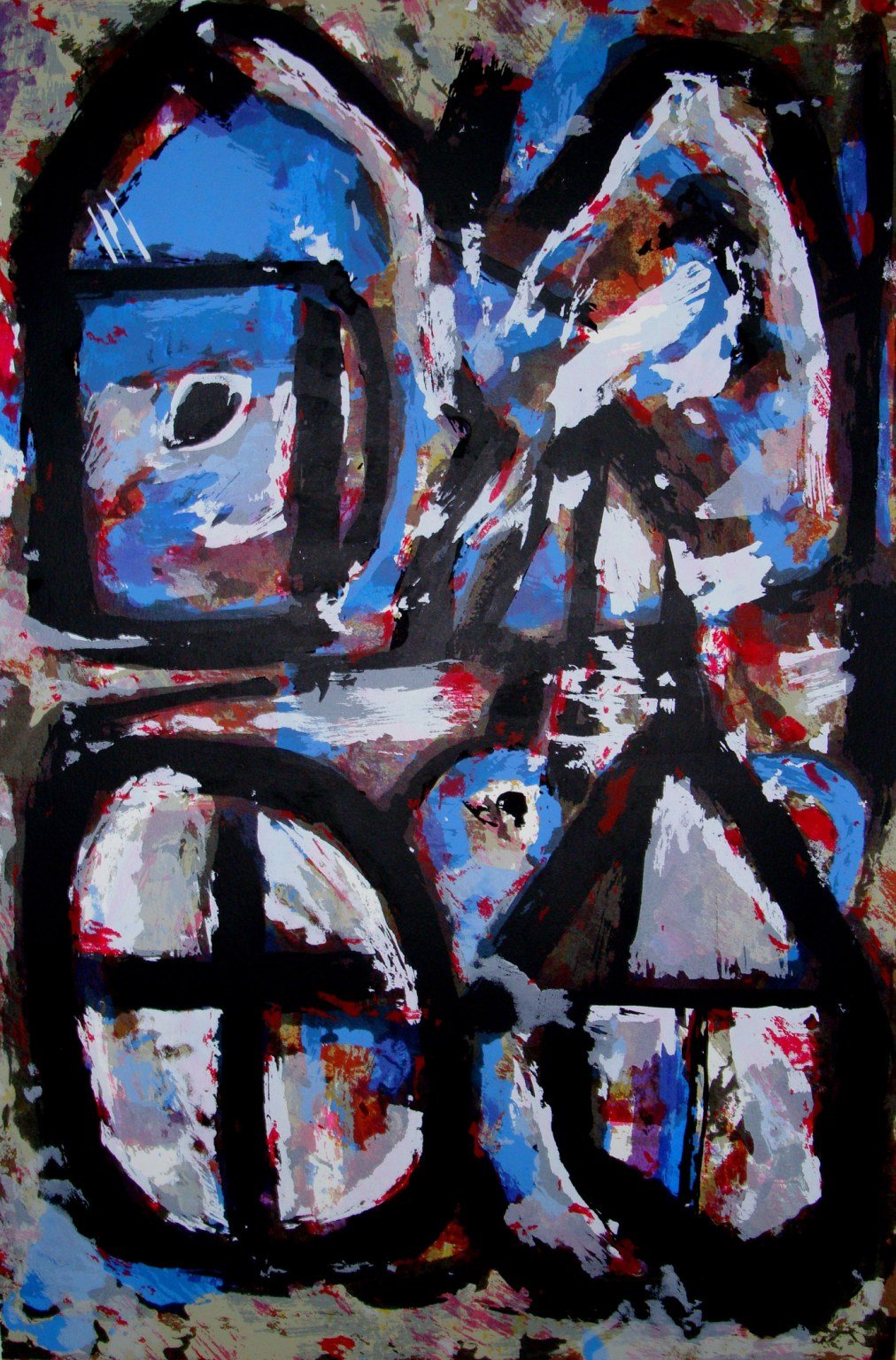
What did the contact with personalities as remarkable as the ones you included in your graphic editions leave you?
I have always thought that the path of any artist is very long and turbulent. In sports terms, a marathon race, but with countless obstacles. It is full of many misunderstandings, envies, natural hurdles and fabricated by the competition. We artists are insecure and very competitive beings.
I’ve really felt that each recognition is one more stone in a great building, and that they arrive at the moment they had to arrive, if the requirements of this profession which, at the same time, is a passion, have been met: information, development of the technique, disagreement with what has been achieved, perseverance in the work and adequate promotion.
Cuban farmers say that knowing how to cluck is as important as laying the egg.
Exactly. You couldn’t say it better.
My work in the publication of other artists took place between 1991 and 2010. It allowed me to interact and do business with characters such as Cundo Bermúdez, Mario Carreño, Agustín Fernández, Guido Llinás, José Mijares, Enrique Gay García, Hugo Consuegra and Rafael Soriano, to mention some of the maestros; as well as countless contemporary artists that time has not yet put in their rightful place. I learned something from everyone. I also became friends with some of them.
But if I had to highlight a surprising and relevant fact in my experience as a serigrapher and editor, this is related to the decision to publish Rojo y Negro in 1993 and, in 1995, Verde y Negro. In those years Carmen Herrera was one of many artists with talent, work and career that would have deserved, at least, the attention of critics. But perhaps her minority status, as a Cuban and a woman, decided that her fate was not like that of many other minimalist men and Americans.
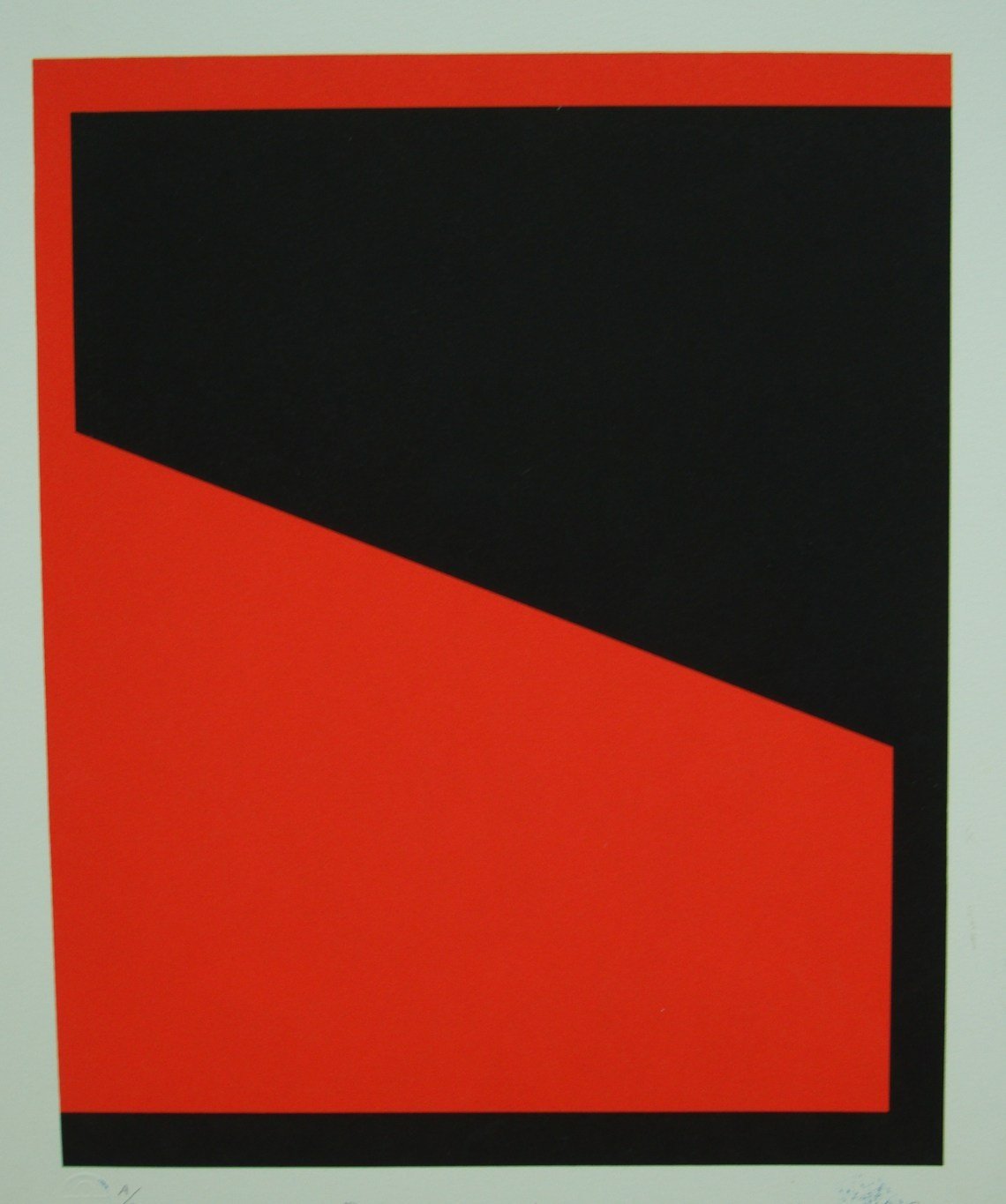
Let’s mention Rothko, an icon, just as one example. His long life was spent this way, without reaching the deserved recognition, until the new millennium started and just when the new boom of geometric painting had begun, the interest for his work by gallery owners, scholars and collectors was unleashed. Let’s say: acclaimed. The Tate Gallery acquired one of Carmen’s pieces, a fact that gives her the transcendental condition of being the first Latin woman who joined the important collection. Note down there: a Cuban woman. And so began her late career to fame. Carmen Herrera is undoubtedly our most famous artist, internationally, of all time.
The two pieces of Herrera mentioned were in a drawer in my workshop for more than fifteen years. They did not sell, nobody seemed to be interested in her work. When Carmen was catapulted to deserved fame, it became the most productive project in my collection, and from $50.00 (the price she had on my page for many years), Rojo y negro is currently selling for more than $5,000.00 in world marketing and art auctions. Until a few years ago she was not known in Miami and possibly not even in Cuba, and today the world’s collectors are dying to acquire one of these pieces. Carmen exceeded the price level of our beloved and very important Amelia Peláez: her originals are already sold for millions of dollars. These are the follies of the art market.
Counting, discounting, making a tight balance of your intense trajectory, what dreams do Víctor Gómez have left to fulfill?
Travel to Havana, where I haven’t set foot for 40 years.
What prevents you from doing so?
A bureaucratic affair with Immigration there. I have applied for my passport, but, they say, I don’t appear in the records as a Cuban citizen, I don’t exist. On several occasions the Experimental Graphic Workshop of the Cathedral has invited me to exhibit, and it’s impossible. The bureaucracy is deaf. And also blind.
I want to see Havana again, visit some friends I left in that city, maybe say goodbye for the last time.
It is also a desire to deepen my legacy, to leave some of my work in the National Museum of Fine Arts. And, very importantly, I would like the differences between Cubans, the hatreds, to end, that we can live in peace as a nation of powerful culture. And be definitely happy.

